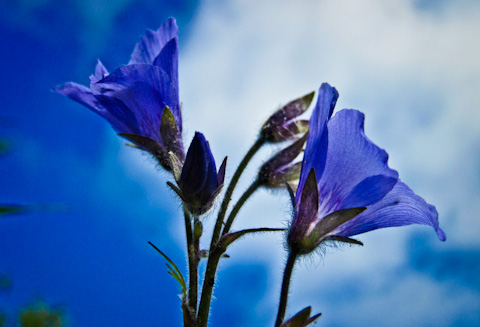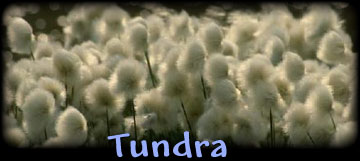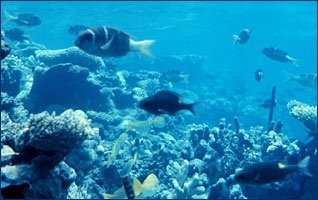The "Tundra Biome" is at the top of the world around the north pole.
Below a thin layer of tundra soil is its permafrost, a premanently frozen layer of ground. during the brief summers, hte top section of the soil may thaw just long enough to allow plants and microorganisms to grow and reproduce.
How cold is cold? The tundra biome is at the top of the world -- around the North Pole! Below a thin layer of tundra soil is its permafrost, a permanently frozen layer of ground. During the brief summers, the top section of the soil may thaw just long enough to allow plants and microorganisms to grow and reproduce.
Climate:
In the tundra conditions are very cold, with a normal temperature less than 5 degrees celsius. An the precipitation (mostly waht they get is snow) less then 100mm per year. the summers are very brief with tempertautres above freezing lasting only for a few weeks at most. The summers concides with periods of almost 24 hour daylight, so their plant growth can be great.
Cool Facts:
1) The alakan tundra has an average of an annual temperature colder than five degrees farenheit adn receives less then four incjes of preciptatio a year.
2) Plants survive the harsh conditions of the tundra by going dormant through winter, growing protective coatings, or retaining old leaves for nutriton.
3) Animals have adapted to the alaskan tundra by developing warm winter coats, compact bodies to preserve heat, and camouflage for diffrent seasons.
4) Alaskan tundra does not have any trees. it is also very windy and has dramatic seasonal changes, including drastic changes in daylight hours throughout the year.
5) Alaska's tundra is threathened by airborne pollutants,. oil and gas development, and global warming.
 The Dwarf Fireweed is a smaller relative of the common Fireweed, growing up to 20in and fifty-one centimeters high. Dwarf fireweed are often found growing along streams or riverbars, but may occasionally, be found growing in some rocky terrain, in the mountains.
The Dwarf Fireweed is a smaller relative of the common Fireweed, growing up to 20in and fifty-one centimeters high. Dwarf fireweed are often found growing along streams or riverbars, but may occasionally, be found growing in some rocky terrain, in the mountains. 





